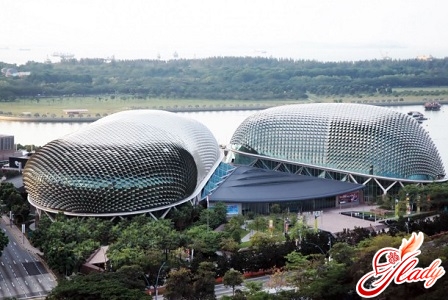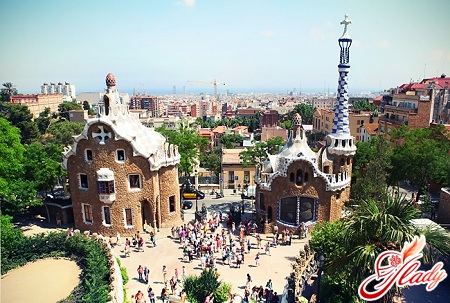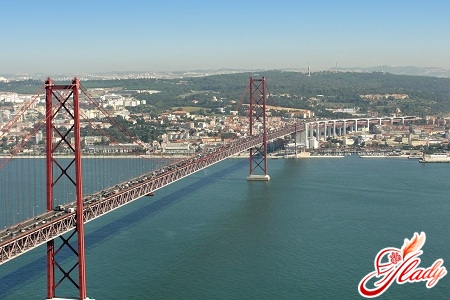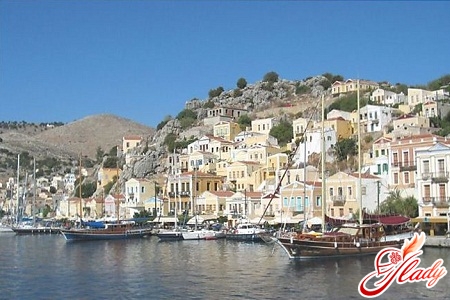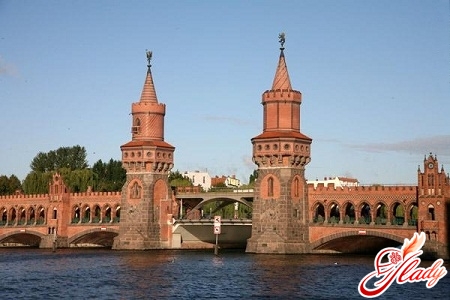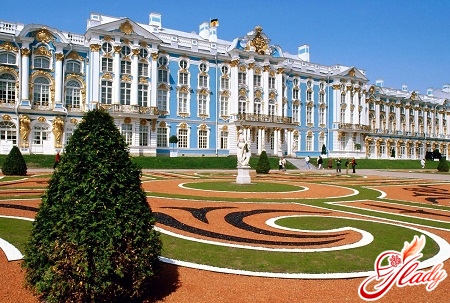
Saint Petersburg is a legendary city,a city of mystery, a city that evokes emotions of all sorts, but not indifference. It is located in the northwest of Russia, with one of its outer sides washed by the waters of the Gulf of Finland, and from the inside, like veins and capillaries, the city is penetrated by rivers and canals. The brainchild of Peter the Great - the northernmost city in the world, with a population of more than one million people. This city has been celebrated in literature and played a significant role in the fate of Russia, and its own fate is epic, full of drama and sometimes simply fantastic plots.
Sights of St. Petersburg: the main places
The city and its historical center are onea major landmark protected by UNESCO. The flow of tourists here never stops, but in a few days it is possible to see only a very small part of all those cultural and historical sites that the city is so rich in. It would take a lot of time to list all the attractions in St. Petersburg, so here are only some of the most significant of them and highly recommended for visiting by anyone who is lucky enough to at least once find themselves in the former imperial capital of one of the most powerful powers in the world.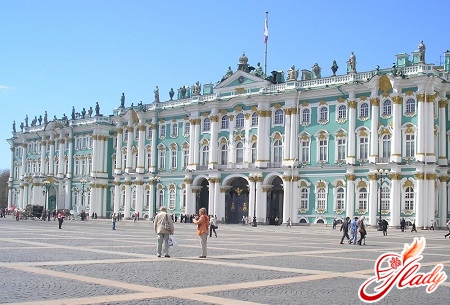
Palace Complexes
- Winter Palace
Until the revolution of 1917- this is the official winter residence of the Russian tsars, built in 1754-1762 according to the design of B.F. Rastrelli in the Elizabethan Baroque style. The most beautiful architectural ensemble is formed by the Winter Palace and Palace Square. It is here that one of the largest cultural, historical and art museums in the world and Russia is located - the Hermitage. It occupies five buildings standing along the embankment of the Neva River.
- Mikhailovsky (Engineers) Castle
Built in 1797-1801 by architect V.I.Bazhenov in the classical style. The customer of the construction was Paul I, who was born in the wooden Summer Palace of Elizabeth Petrovna that had stood on this site before and was strangled by his subjects a few days after settling in the new castle. The Mikhailovsky castle was named after the patron of the Romanov dynasty, Archangel Michael, and the second name was given to the building after the Main Engineering School was located there in 1823. There is a legend that the ghost of Emperor Paul lives in the castle.
- Yusupov Palace on the Moika River
This palace, built in a classical style,Built in the last quarter of the 18th century according to the design of J. B. Vallin de la Mothe, it survived five generations of the wealthy princely family of the Yusupovs. Here, in December 1916, in one of the basements of the palace, Grigory Rasputin was killed with the participation of Felix Yusupov and his accomplices. At present, the historical rooms, state rooms and home theater are open to visitors, where performances and musical evenings are periodically held.
- Beloselsky-Belozersky Palace
The building in the neo-Baroque style is located onintersection of the Fontanka River and Nevsky Prospect. The palace was built by the architect A. I. Stackenschneider in 1847-1848 and was considered one of the most secular places in the city in the period 1860-80. All the world flocked here to the hostess of the salon, Princess Kochubei, including prominent figures of the time and members of the imperial family. In the 20th century, the interiors of the palace were practically not damaged.
- The Marble Palace
Designed by architect Antonio Rinaldiin the classical style, in 1768-1785. Various types of marble were used in the construction, and the facades of the building are faced with natural stone. Initially, the palace was intended for the favorite of Catherine II, Count G. G. Orlov, but he died in 1783 before the construction was completed. In the 19th-20th centuries, the palace was the residence of the Grand Dukes Konstantinovich of the Romanov dynasty. In front of the eastern facade of the palace there is a monument to Alexander III.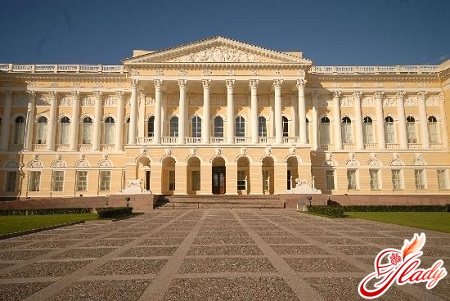
Museum Complexes
- Pushkin Museum-Apartment on the Moika River
It is part of the All-Russian Museum of A.S.Pushkin and tells about the last months of the poet's life. The Pushkin family rented an apartment in this house from September 1836. Among other exhibits, the museum presents portraits and authentic personal belongings of Pushkin and his family members, including the poet's desk, the sofa on which he died in January 1837, and a death mask made by the sculptor S. I. Galberg.
- Central Naval Museum
It is one of the largest maritime museums in the world.and the oldest museums in Russia. Since 2011, the exhibition has been located on Truda Square, in the building of the Kryukov (Naval) Barracks, built by the architect Ivan Chernik in 1844-1852. The history of the museum began in 1709, when Peter I established a repository for ship drawings and models. Subsequently, the collection was constantly replenished, and now in the museum you can see models of military aircraft and ships, including ships that participated in the coup of 1917. One of the branches of the museum is the famous cruiser "Aurora".
- Akhmatova Museum in the Fountain House
Here, on the banks of the Fontanka River, in the southern wingThe poetess lived for a long time in the Sheremetev Palace, built in the Baroque style according to the design of S. I. Chevakinsky. The Akhmatova Museum was opened in this house in 1989. Currently, the museum's collection contains about 50 thousand exhibits, including Akhmatova's publications, manuscripts and photographs of the poetess and her contemporaries, book editions of Silver Age writers with their autographs, and much more.
- State Russian Museum
Has the most extensive collection of Russianart in the world. The Mikhailovsky Palace is the main building of the museum, and its branches are located in the Stroganov and Marble Palaces, as well as in the Mikhailovsky Castle. The museum complex includes the Cabin of Peter I, the Summer and Mikhailovsky Gardens. The museum presents objects of decorative and applied art and folk art, and in the collection of paintings you can see such famous works as "The Last Day of Pompeii" by Karl Bryullov, "The Knight at the Crossroads" by Viktor Vasnetsov, "The Ninth Wave" by Ivan Aivazovsky, "Barge Haulers on the Volga" by Ilya Repin.
- Dostoevsky Museum
This museum, which opened in 1971,was dedicated to the 150th anniversary of the writer's birth, is located in Kuznechny Lane, not far from Pyat Uglov. Here, F.M. Dostoevsky's family lived from October 1878, and here, in January 1881, the writer died. The museum's collection includes authentic items of the writer and his family, donated to the museum by Dostoevsky's descendants. Exhibitions of contemporary artists are periodically held here, and the museum also has a functioning theater.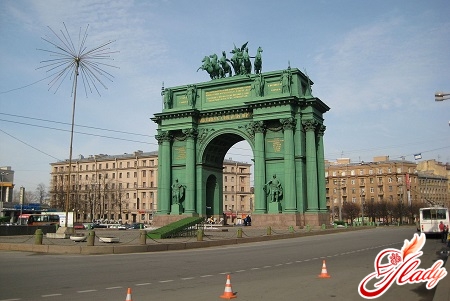
Monuments and monuments
- The Narva Triumphal Gates
Built in 1827-1834.in memory of the heroes of the Patriotic War of 1812. This architectural monument is located on Stachek Square and represents the Empire style. The architect V. P. Stasov, sculptors V. I. Demut-Malinovsky, S. S. Pimenov and P. K. Klodt took part in its creation. The height of the gate is more than 30 m, the width is 28 m. During the Great Patriotic War, the gate was significantly damaged by bombing and shelling, but was later restored. In 1944, the victorious troops entered the city through the gate arch.
- Bronze Horseman
This monument is dedicated to Catherine II.his predecessor Peter the Great. The monument was unveiled on Senate Square in August 1782. The equestrian statue of Peter, created by sculptor Etienne Falconet, is made of bronze, and was named the Bronze Horseman after the publication of the poem of the same name by A. S. Pushkin. The pedestal of the monument is the Thunder Stone, a solid granite monolith weighing approximately 2,400 tons, the delivery of which to the city of St. Petersburg is a separate amazing story.
- Chizhik-Pyzhik
The monument is 11 cm high and weighs about 5 kg.was erected on Fontanka, next to the 1st Engineering Bridge in November 1994. Not far from this place in the 19th century there was the Imperial School of Law, and its students wore green and yellow uniforms reminiscent of the plumage of a siskin. A popular urban legend says that for the colors of this uniform and for the traditional downy caps, the students of the school received the nickname "Ciskins-Pyzhiks". Since then, the monument has been stolen 7 times, but each time it was restored. There is a belief that a wish will come true if a coin thrown from the bridge lands on the pedestal of Chizhik-Pyzhik and remains lying there.
- Monument to Catherine II
The monument was erected on Ostrovsky Square in1873 and is a joint work of the artist M. O. Mikeshin and sculptors M. A. Chizhov and A. M. Opekushin. Empress Catherine is depicted with the regalia of royal power in her hands and the Order of St. Andrew the First-Called on her chest. The pedestal is surrounded by nine figures of prominent figures of the Catherine era, among whom is the military leader Alexander Suvorov.
- Monument to Alexander Sergeevich Pushkin
This monument is the work of sculptor M.K.Anikushin and architect V. A. Petrov was installed on Arts Square in 1957. The height of the sculpture together with the pedestal is 7 m 90 cm. Due to the impressive pedestal, the figure of the poet rises above the ground, thanks to which the monument fits perfectly into the overall ensemble of the square, which was designed by the architect K. I. Rossi in the classical style.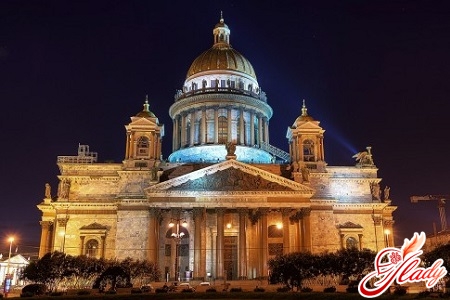
Temples and cathedrals
- Cathedral of the Resurrection of Christ on Blood (Savior on Blood)
The cathedral was built in 1883-1907.in the Russian style, according to a project prepared jointly by the architect A. A. Parland and Archimandrite Ignatius Malyshev. On the bank of the Griboyedov Canal, at the entrance to the Mikhailovsky Garden, on the very spot where the church now stands, an assassination attempt was made on Emperor Alexander II in March 1881, as a result of which he was mortally wounded. Funds were collected from all over Russia to erect a monument to the Tsar-Martyr here. The nine-domed church can accommodate up to 1,600 people, and its height is 81 m.
- Saint Isaac's Cathedral
This is the largest Orthodox church in St. Petersburg.was built according to the design of the architect Auguste Montferrand in 1818-1858 and was named after Saint Isaac of Dalmatia, on whose day Peter I was born. The cathedral is built in the style of late classicism and is a unique example of architectural art. Its interior area is more than 4,000 sq. m., and its height is 101.5 m. The walls are faced with light gray marble, and 112 granite monolithic columns rise along the perimeter. At the corners and tops of the pediments are statues by the sculptor I.P. Vitali, representing the 12 holy apostles. A beautiful panorama of the city opens up from the observation deck located on the dome of the temple. The walls and columns of the cathedral bear traces of shells that fell here during the bombings during the Great Patriotic War.
- Holy Trinity Alexander Nevsky Lavra
It was believed that at the location of thisthe first and largest male Orthodox monastery in the city (the eastern end of Nevsky Prospect and the place where the Monastyrka River intersects the Neva) in July 1240, the squad of Prince Alexander Nevsky won a victory in a battle with the Swedes. In honor of this and Peter's victories over the Swedes, a monastery was founded here in 1710 by Peter I, the initial projects of which were worked on by architects I.E. Starov and Domenico Trezzini. The monastery has several famous necropolises, where many outstanding personalities of the 18th-19th centuries are buried.
- Buddhist temple "Datsan Gunzehoyney"
The construction of this temple lasted 6 years and wascompleted in 1915. When constructing this northernmost Buddhist temple in the world, the architect G.V. Baranovsky adhered to the canons of Tibetan architecture. Money for the construction work was collected by Buddhists throughout the Russian Empire, part of the funds were received from the 13th Dalai Lama and his envoy, the Buryat lama Agvan Dorzhiev, who petitioned for the construction of the temple in St. Petersburg. Currently, the temple is active and is located near the Staraya Derevnya metro station.
- Peter and Paul Cathedral
This Orthodox church is a burial place for Russians.tsars, is located on Hare Island, in the Neva delta, where the Peter and Paul Fortress was founded in 1703, designed to guard the exit to the Baltic Sea. In fact, the history of the northern city began from this small island. The current cathedral was built by the architect Domenico Trezzini in the Petrine Baroque style in 1712-1733, on the site of a wooden church of the same name. The gilded spire of the cathedral, crowned with a figurine of a flying angel, is one of the symbols of the city.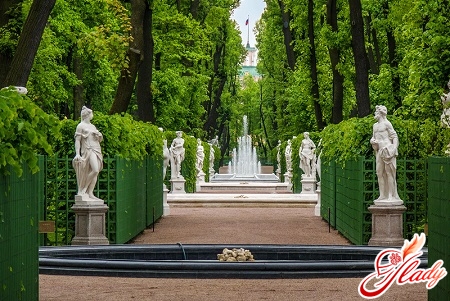
Garden and park ensembles
- Summer garden
According to the plan of Peter I, the garden, founded in 1704g., was supposed to compete with the most famous parks of Europe in its beauty and luxury. The Summer Garden lattice, designed by the architect J. Felten, made the city famous, gaining worldwide renown. After the reconstruction of 2009-2012, 8 of the previously existing fountains were recreated, and the garden sculptures were replaced with exact copies made of artificial marble. The originals of the sculpture collection were moved to permanent museum storage in the halls of the Engineers' Castle.
- Mikhailovsky Garden
This city garden is an example of landscapeart of the 18th-19th centuries, created according to the design of the great Carlo Rossi, is adjacent to the main building of the Russian Museum - the Mikhailovsky Palace. The Mikhailovsky Garden amazingly combines two different styles, landscape (English) and regular (French), and is a striking example of the architectural unity of the natural landscape and the building (the Mikhailovsky Garden and the palace).
- The Field of Mars
The authors of the project of this square, located inin the very heart of St. Petersburg, - architects I. A. Fomin and L. V. Rudnev. In the 18th-19th centuries, troop reviews and city parades were held here, hence the name of the square. After the 1917 revolution, a memorial to the fallen revolutionaries was erected here, and in 1957 the Eternal Flame was lit. Not far from the square, facing the Neva, there is a monument to the commander A. V. Suvorov by sculptor M. I. Kozlovsky. Of course, the list of interesting places in St. Petersburg is incomparably wider, and a whole life may not be enough to see all of them, while having the opportunity to take your time and fully feel the breath of time, history and the almost human soul of this magnificent city.




